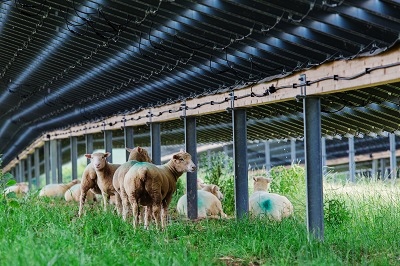Solar Farm plans scaled down
On 09/01/2015 At 5:03 pm
Category : Missed a ThameNews story?, More News, Thame news
Responses : No Comments
A revised planning application for the proposed Thame Solar Farm at Stonepits Farm near Towersey aims to reduce the site area by over 70% — from nearly 24 to just over 6.6 hectares — and specifies more native tree and hedgerow planting to make the site less visible to the public.
The revised plan removes almost all of the site’s ‘best and most valued’ (BMV) agricultural land, which will continue to be conventionally farmed. Continued agricultural use of the solar farm itself is also proposed, in the form of grazing sheep, while surrounding areas will be enhanced to support wildlife and biodiversity by planting wildflowers and installing beehives.
The new plan, submitted by developers Big60Million, Luminous Energy and Belectric UK, is intended to address local concerns about visibility from neighbouring properties, roads and footpaths. Drawing on consultations with local residents and feedback from South Oxfordshire District Council (SODC), it will be considered by SODC’s Planning Committee at the end of January.
As part of the substantial scaling down of Thame Solar Farm, the solar arrays will now be set back to leave a 140-metre-wide corridor between them and Windmill Road, and the existing hedgerow will be allowed to grow to a height of 3 metres, further restricting views from the road. A long lost native hedgerow along the western edge of the solar farm will be re-established, screening the site from any redevelopment of the currently derelict Stonepits buildings.
Along the eastern boundary, the solar arrays will be set back an average of 30 metres from the bridleway, which will itself be improved to increase accessibility and prevent deterioration of the trail. As recommended by the Environment Agency, and in keeping with local landscape character assessments, existing willow trees alongside the path will be pollarded. The resulting branches take root rapidly when pushed into the ground and will be used along with under-storey planting to fill in gaps and strengthen the hedgerow. Compared to the original proposal, 60% less of the bridleway will now be adjacent to the solar farm, so overall visual impact will be hugely reduced.
The reduced site area means that solar arrays will be no closer than 45 metres from the public footpath to the north of the site and a proposed native hedgerow will be planted along this boundary to further soften and filter the view.
 Belectric’s development manager, Mike Rogers, commented: “Early last year we identified Stonepits Farm as potentially suitable for solar power generation because it’s largely flat, inconspicuously located and, crucially, has a 9000 kVA grid connection adjacent to the site. Since then, we’ve been talking to and listening to local people and the planning authority, and working hard to address their concerns. We’ve scaled back the project by more than half, greatly increased the buffer zones between the solar farm and public rights of way, and worked up landscape plans to minimize any residual visual impact.
Belectric’s development manager, Mike Rogers, commented: “Early last year we identified Stonepits Farm as potentially suitable for solar power generation because it’s largely flat, inconspicuously located and, crucially, has a 9000 kVA grid connection adjacent to the site. Since then, we’ve been talking to and listening to local people and the planning authority, and working hard to address their concerns. We’ve scaled back the project by more than half, greatly increased the buffer zones between the solar farm and public rights of way, and worked up landscape plans to minimize any residual visual impact.
“Solar farms are usually photographed from the air — precisely the angle from which they look biggest and most intrusive. At ground level, surrounded by trees, hedgerows and wildflower margins, they blend in much better than people might expect. Besides generating clean energy, our plans for Thame Solar Farm include sheep grazing between and beneath the panels, and working with local wildlife experts to provide habitat for birds, small ground dwelling mammals and pollinating insects. In the future, we hope local people will want to become involved with community projects based around our solar farm concept.”


